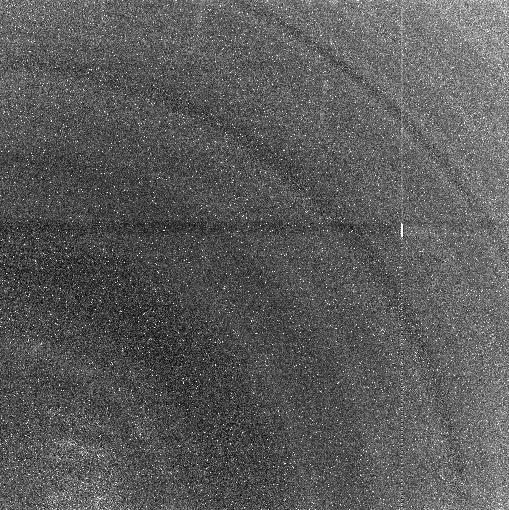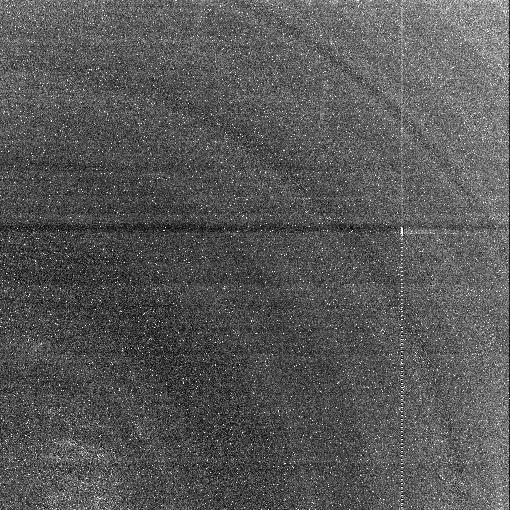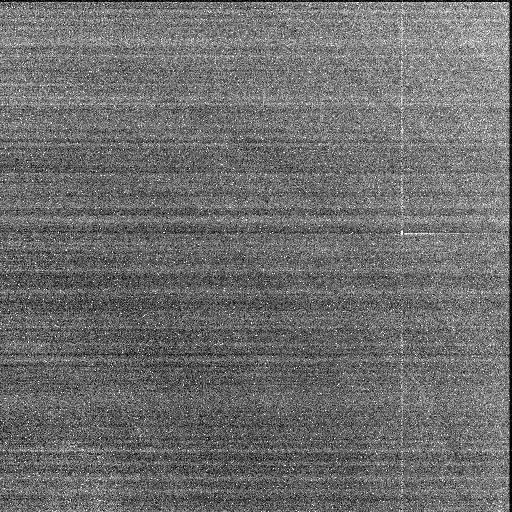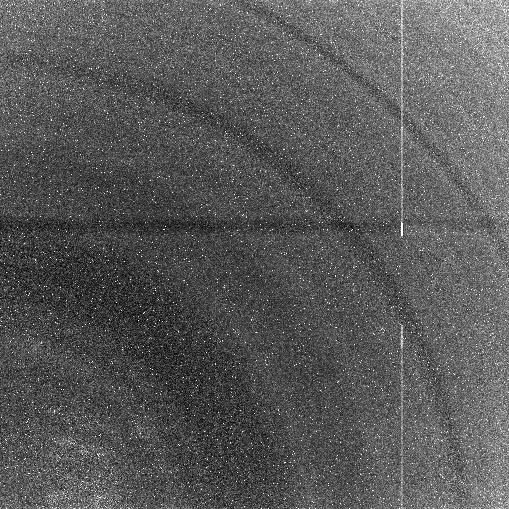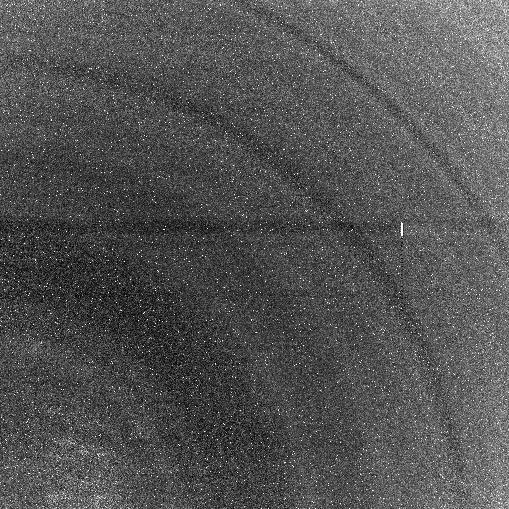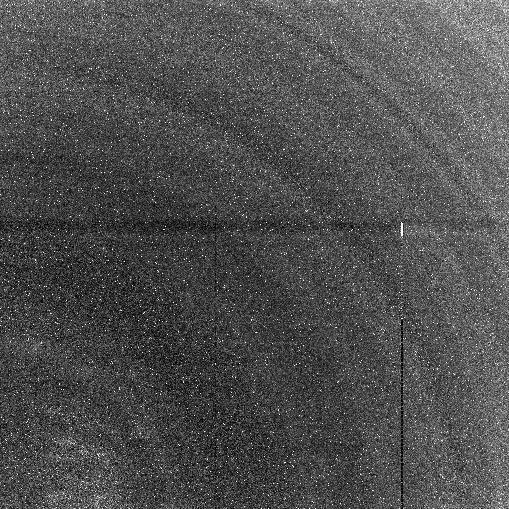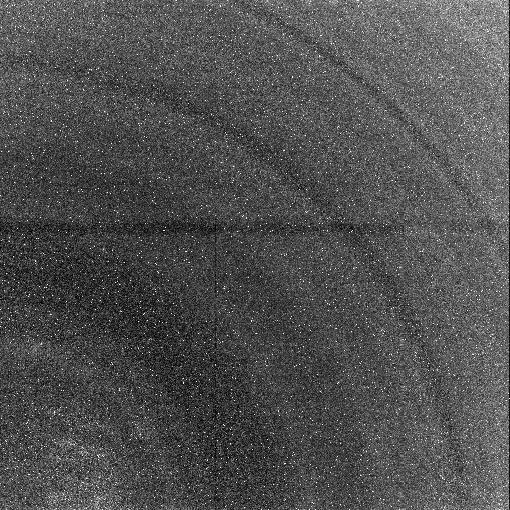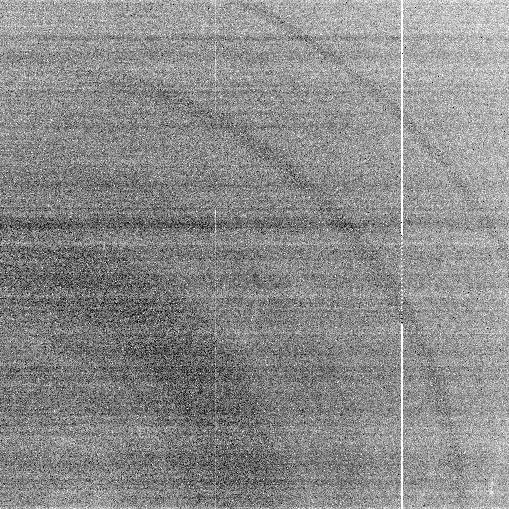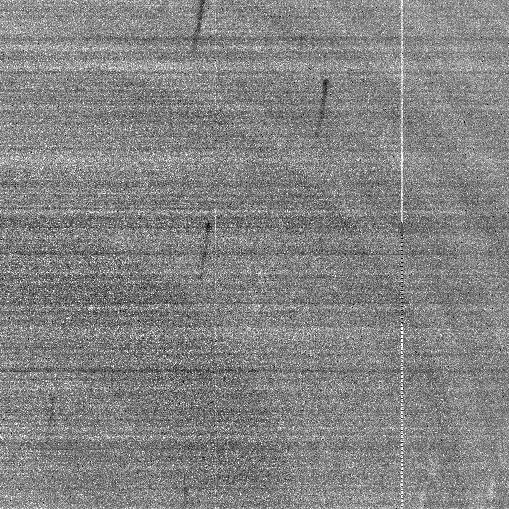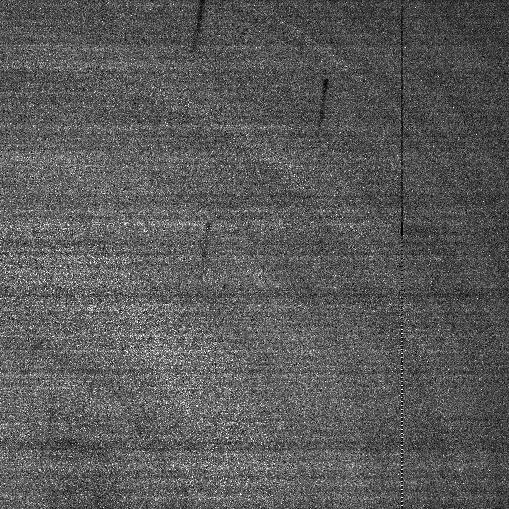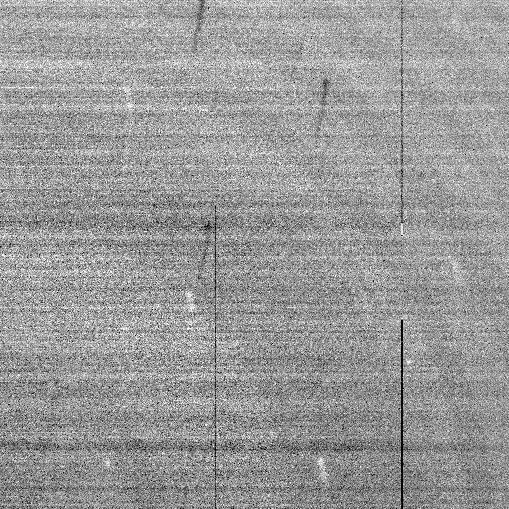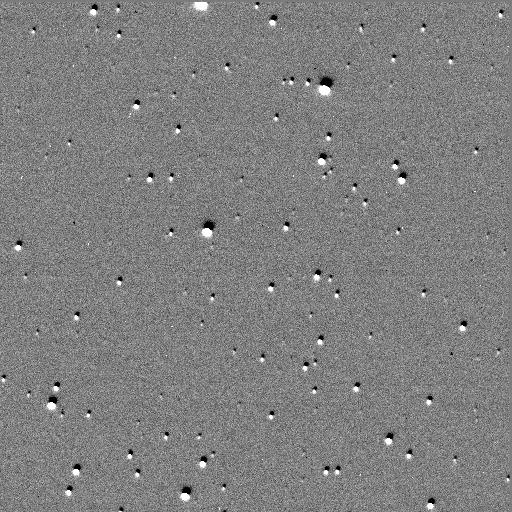
Image 8a.
Difference between two consecutive 120-s science images
(ak06 seq. 118 and 119)
from which the average bias frame (but not the dark)
was previously subtracted.
The arcs don't appear in the difference frame,
which confirms that they didn't change between the two science frames.
|
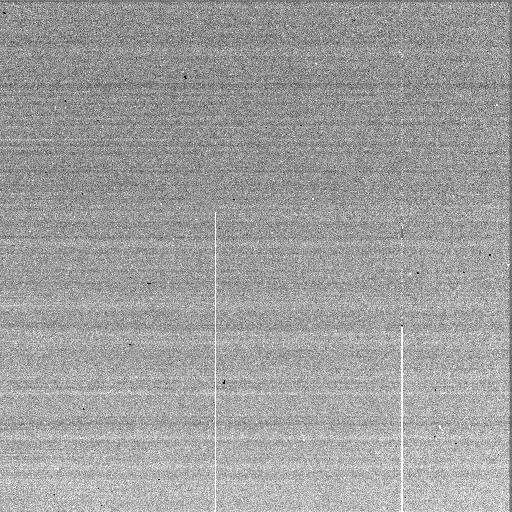
Image 8b.
Difference between two consecutive 120-s dark images
(ak06 seq. 120 and 121)
from which the average bias frame was previously subtracted.
These darks were recorded immediately after the science images
differenced for image 8a.
The arcs don't appear in the difference frame,
which confirms that they didn't change between the two dark frames.
|
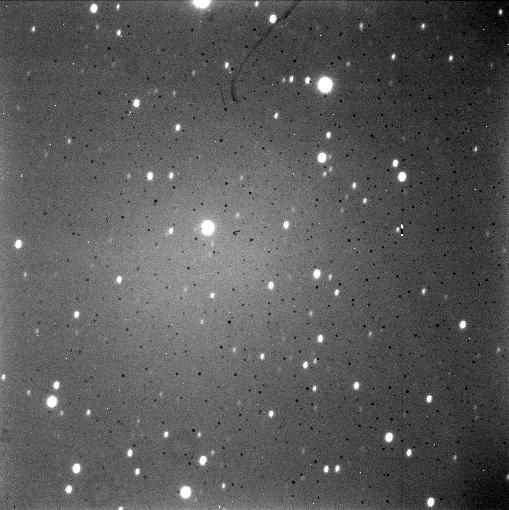
Image 8c.
Difference between one of the preceding
120-s science images (seq. 119)
and the immediately following 120-s dark image
(seq. 120).
The average bias frame was previously subtracted from both images.
The arcs do appear in this difference frame,
which demonstrates that the arcs did change
between seq. 119 and seq. 120.
Seq. 120 was started only 18 seconds after Seq. 119 finished,
and the telescope wasn't moved between these two images.
This is consistent with our experience that the
arcs do not subtract out in calibration with the rest of the dark signal.
The arc contrast is low because the image is unflattened;
flattening this image gives the same result shown as sample image (4a).
We note that the image display contrast of the sky background is much
higher in sample images (8a) and (8b), and in those images there's
no hint of the arcs at all.
|
